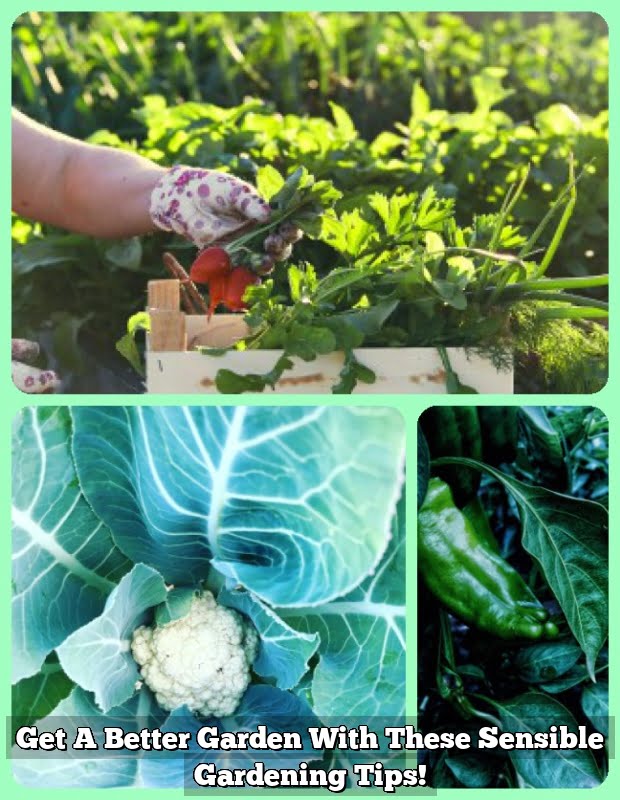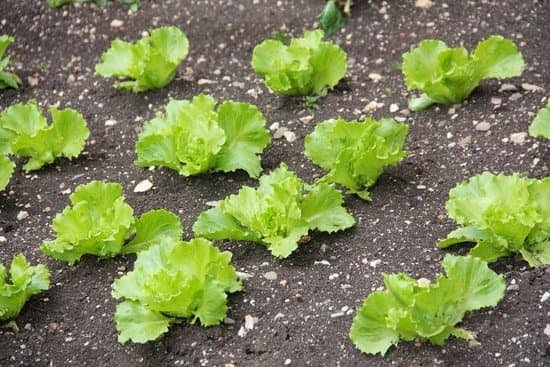June is a pivotal month for vegetable gardening as it marks the transition from spring to summer, bringing new challenges and opportunities for gardeners. In this article, we will explore the vital role that June plays in the success of your vegetable garden and uncover essential tips to make the most of this season.
Whether you are a seasoned gardener or a novice just getting started, understanding the importance of June and implementing these practices can lead to a bountiful harvest.
Assessing the progress and growth of vegetables planted in previous months is an essential step in evaluating your garden’s current state. By doing so, you can identify any issues or areas that require attention. Additionally, we will discuss which vegetables are best suited for planting in June to ensure a fruitful yield later in the season.
With rising temperatures, efficient watering strategies become critical to maintain plant health and prevent water wastage. We will delve into various watering techniques that can help combat dehydration without overwatering your plants. Furthermore, pest management is crucial during this time as certain pests thrive in warm weather. Discover effective methods to keep pests at bay while fostering a healthy environment for your plants.
Throughout June, it is crucial to replenish soil nutrients to prevent depletion and maintain optimal conditions for plant growth. Explore tips on how to provide essential nutrients needed by your plants during mid-summer. We will also tackle common diseases that may plague your vegetable garden in June and provide preventive measures to ensure their vitality.
Maximizing space is another aspect we will explore, especially for smaller gardens or limited plots. Creative space-saving techniques can help increase productivity and maximize the variety of veggies you grow. Finally, we will touch upon harvesting tips including knowing the right time to harvest each vegetable and ways to preserve their freshness.
In addition to all these insights, stay tuned for bonus tips that encompass additional hacks and tricks tailored specifically for June gardening needs. This comprehensive guide aims to equip you with all the necessary knowledge and techniques to make your June vegetable garden thrive.
Assessing the garden
Now that June has arrived, it is crucial for vegetable gardeners to assess the progress and growth of their plants that were planted in previous months. This evaluation allows gardeners to determine if any adjustments need to be made for the remaining growing season. Here are some key steps to take when assessing your garden:
- Take inventory: Begin by conducting a thorough walk-through of your garden. Make note of what vegetables were planted, where they were planted, and how they are currently growing. This will help you identify any issues or successes in specific areas of your garden.
- Check for signs of health or disease: Examine each plant closely to check for signs of pests or diseases. Look for any wilting, discoloration, or abnormal growth. Common signs include yellowing leaves, mold or mildew on leaves, and chewed foliage.
- Measure plant growth: Use a ruler or measuring tape to track the height and overall size of your plants compared to when they were initially planted. This can provide insights into whether they are growing at a healthy rate or if they may need extra attention.
After assessing your garden, you can then make informed decisions on how to proceed for the rest of the growing season. Whether it’s adjusting watering schedules, implementing pest control measures, or providing additional support like stakes or trellises, addressing any issues early on can help ensure a successful harvest later in the summer.
During this evaluation process, keep a journal or create a spreadsheet to record your findings. This will serve as a valuable reference throughout the season and can help you identify patterns or trends in your gardening practices.
Steps
- Take inventory
- Check for signs of health or disease
- Measure plant growth
By taking the time to assess your garden in June, you can stay proactive and make necessary adjustments to ensure healthy growth and ultimately, a bountiful harvest.
Summer planting
In June, vegetable gardeners have the opportunity to plant a variety of vegetables that will yield a bountiful harvest later in the summer. Whether you are a seasoned gardener or just starting out, it is important to choose the right vegetables for planting in June to ensure success. Here is a list of top vegetables that thrive when planted during this time:
- Tomatoes: Tomato plants love warm weather, making them an ideal choice for June planting. Choose from a variety of tomato types such as cherry tomatoes, beefsteak tomatoes, or heirlooms. Plant them in well-draining soil and provide support like tomato cages or stakes as they grow.
- Cucumbers: Another popular choice for summer planting is cucumbers. These refreshing vegetables are easy to grow and provide a continuous harvest throughout the season if properly cared for. Plant cucumber seeds or young seedlings in rich soil with good drainage, and consider trellising them to save space.
- Beans: Green beans, snap beans, and pole beans are excellent choices for June planting. They prefer warm soil and plenty of sunlight. Sow bean seeds directly into well-prepared soil and provide support for pole beans as they climb.
- Peppers: Peppers thrive in the heat of summer, making them a great addition to your June garden. Choose from sweet bell peppers, spicy jalapenos, or mild banana peppers depending on your preference. Plant pepper seedlings in fertile soil and ensure they receive consistent watering.
To make the most of your summer planting, consider interplanting different vegetables and incorporating companion plants that help deter pests or enhance growth. For example, planting basil near tomatoes can improve their flavor and repel certain insects.
Remember to check specific planting guidelines for each vegetable variety to ensure proper spacing between plants and appropriate care throughout the growing season. By choosing these top vegetables for June planting, you can look forward to enjoying a bountiful harvest in the coming months.
Watering techniques
Watering frequency
The rising temperatures in June mean that vegetables will require more water to stay hydrated and healthy. It is essential to assess the moisture levels of the soil before watering. In general, vegetable gardens need about 1 inch of water per week, which can be adjusted based on specific plant requirements and weather conditions. Proper irrigation techniques should be employed to ensure even distribution of water throughout the garden.
Time of day
Timing your watering sessions is crucial during the hot summer months. It is recommended to water early in the morning or late in the evening when temperatures are cooler, as this will reduce evaporation and allow plants to absorb water effectively. Contrary to popular belief, watering during the hottest part of the day can actually lead to scorching leaves due to intense sunlight exposure.
Deep watering
To encourage strong root growth, it is important to provide deep watering rather than frequent shallow watering. Deep watering allows moisture to penetrate deeper into the soil, promoting healthier plants with a stronger ability to withstand drought conditions later in the season. This can be achieved by using drip irrigation systems or soaker hoses placed at ground level for slow and steady watering.
Mulching
Mulching is an effective technique for conserving moisture in your vegetable garden. By applying a layer of organic mulch around plants, you can reduce evaporation, suppress weed growth, and maintain consistent soil moisture levels. Organic materials such as straw, wood chips, or compost can be used as mulch, providing an additional source of nutrients as they break down over time.
Monitoring plant needs
Keeping a close eye on your vegetable plants’ hydration needs is crucial during hot spells. Signs of underwatering include wilting, yellowing leaves, and stunted growth. On the other hand, overwatering can lead to root rot and fungus issues. Regularly check soil moisture levels by sticking your finger about an inch below the surface. If it feels dry, it is time to water.
Water conservation
In addition to employing efficient watering techniques, it is important to practice water conservation in your garden. Consider collecting rainwater using a barrel system or installing a drip irrigation system that minimizes water waste through evaporation and runoff. Grouping plants with similar water needs together can also make watering more targeted and efficient.
Pest management
Identifying Common Pests in June
As the weather warms up in June, it also becomes a prime time for various pests to thrive in vegetable gardens. It is important for gardeners to be vigilant and familiarize themselves with common pests during this season. Some of the most prevalent pests in June include aphids, beetles, caterpillars, and slugs.
Aphids are small insects that feed on the sap of plants, causing damage to leaves and stems. Beetles, such as Japanese beetles and cucumber beetles, can devour plant foliage and fruits. Caterpillars, like cabbage loopers and tomato hornworms, can also cause significant damage by consuming leaves and even entire plants. Lastly, slugs are notorious for feeding on young seedlings and leaving behind unsightly holes.
Natural Pest Control Methods
To maintain a pest-free vegetable garden in June, it is essential to employ effective pest management techniques without relying on harmful chemicals. One natural method is companion planting, which involves growing certain plants alongside vegetables to repel pests or attract beneficial insects that prey on pests.
For example, marigolds are known to deter many types of pests due to their strong scent. Nasturtiums not only add beauty to the garden but also act as a trap for aphids by attracting them away from the vegetables. Planting herbs like basil or dill can help repel or distract harmful insects.
Another effective way to manage pests is through regular inspection and handpicking them off plants when detected early. Additionally, introducing beneficial insects like ladybugs or lacewings can help control aphid populations naturally.
Natural Pest Control Sprays
In cases where pest populations become too overwhelming, natural pest control sprays can be used. Homemade sprays using ingredients like neem oil or garlic can repel pests effectively without harming the plants or the environment. These sprays can be easily made at home and applied directly to affected areas of the vegetable garden.
Neem oil is derived from the seeds of the neem tree and acts as a repellent for a wide range of pests. Garlic spray, on the other hand, can be made by combining crushed garlic cloves with water. Both sprays are safe to use on edible plants and provide an effective defense against pests in June.
By implementing these natural pest management techniques, vegetable gardeners can ensure their plants remain healthy and productive throughout June while minimizing harm to beneficial insects and the environment.
Maintaining soil health
Maintaining soil health is essential for the success of your vegetable garden, especially in mid-summer when the heat and growing demands can deplete nutrients. To ensure a bountiful harvest throughout the season, it is important to replenish nutrients and prevent soil depletion. Here are some tips to help you maintain soil health in June.
Firstly, consider incorporating organic matter into your soil. This can be done by adding compost or well-rotted manure. Organic matter not only enriches the soil with essential nutrients but also improves its structure, allowing better water retention and root growth. Spread a layer of compost or manure over your garden beds, and gently work it into the top few inches of soil.
Secondly, practice crop rotation to prevent the build-up of pests and diseases in your garden. Different vegetables have different nutrient requirements, so rotating crops helps to ensure that specific nutrients are not depleted from the soil year after year.
For example, if you grew tomatoes in one area last year, plant them in a different bed or section of your garden this year. Consider grouping plants with similar nutrient needs together to make it easier for you to provide targeted fertilization.
Additionally, supplementing your soil with organic fertilizers can be beneficial for maintaining its fertility levels. Look for fertilizers that are specifically formulated for vegetables and follow the instructions on the package for application rates. It is important not to over-fertilize as this can lead to nutrient imbalances or burn the roots of your plants.
Lastly, consider practicing mulching as it helps maintain moisture levels in the soil and suppress weeds. Apply a layer of organic mulch such as straw or wood chips around your vegetable plants. Mulch acts as an insulating barrier against rapid temperature changes and helps conserve water by reducing evaporation from the soil surface.
By following these tips for maintaining soil health throughout June, you can ensure that your vegetable garden remains productive and thriving despite the challenges of mid-summer. By replenishing nutrients and preventing soil depletion, you will be rewarded with healthy plants and a bountiful harvest throughout the growing season.
Disease prevention
June is a crucial month for vegetable gardening as it brings with it the threat of various diseases that can affect the plants. One common disease that gardeners often encounter in June is powdery mildew. This fungal infection appears as a white or gray powdery coating on the leaves, stems, and fruits of plants. It usually thrives in warm, humid conditions, making June an optimal time for its growth.
To prevent powdery mildew and other diseases from taking hold in your vegetable garden, there are several steps you can take. First, ensure proper spacing between plants to allow for good air circulation. This will help reduce humidity levels and discourage the growth of fungi. Additionally, avoid overhead watering as it promotes moisture on the leaves and increases the risk of fungal infections. Instead, focus on watering at the base of the plants to keep foliage dry.
Another common disease in June is tomato blight, which affects tomatoes and other members of the nightshade family. Blight typically appears as dark spots or lesions on leaves, stems, and fruits. To prevent tomato blight, it is important to water plants directly at their base rather than wetting foliage. It is also recommended to remove any infected plant material immediately to prevent further spread.
In addition to powdery mildew and tomato blight, there are several other diseases that can impact vegetable gardens in June such as downy mildew and fusarium wilt. To minimize their occurrence, regular inspection of plants for early signs of disease is crucial. Promptly removing any infected plant parts can help limit the spread of disease throughout the garden. Implementing crop rotation practices can also be beneficial in preventing certain soil-borne diseases.
Disease prevention is vital to maintaining a healthy vegetable garden during this critical month. By following these precautions and promptly addressing any signs of disease, you can ensure that your garden remains productive throughout the summer season.
| Common June Diseases | Prevention Techniques |
|---|---|
| Powdery Mildew | – Ensure proper spacing between plants for good air circulation
|
| Tomato Blight | – Water plants directly at their base to prevent wetting foliage
|
| Downy Mildew and Fusarium Wilt | – Regularly inspect plants for early signs of disease
|
Maximizing space
For individuals with smaller gardens or limited plots, it can be challenging to grow a wide variety of vegetables. However, there are creative techniques that can help maximize the available space and still yield a bountiful harvest. By employing these space-saving strategies, even gardeners with limited area can enjoy the benefits of homegrown vegetables.
One effective method is vertical gardening, which involves growing plants vertically rather than horizontally. This technique not only saves space but also adds an aesthetic appeal to the garden. There are various ways to implement vertical gardening, such as using trellises, arbors, or hanging baskets. Vegetables like beans, peas, cucumbers, and tomatoes thrive in this setup as they can be trained to climb and twine around the support structures.
Another technique to make the most out of limited space is companion planting. This method involves planting two or more compatible crops in close proximity. Certain plants have natural synergies that benefit each other when grown together.
For example, tall-growing plants like corn provide shade for lower-growing plants like lettuce or spinach. In return, the leafy greens provide ground cover and help retain moisture for the corn’s roots. Companion planting optimizes space by utilizing every inch of soil effectively.
Container gardening is also an excellent solution for those with limited outdoor space or no access to a traditional garden plot. Almost any vegetable can be grown in containers as long as they have sufficient depth and drainage holes at the bottom. Containers can be stacked on shelves or arranged vertically to create a visually appealing display while maximizing growing area. Additionally, container gardens are easily movable, allowing for flexibility in sun exposure throughout the day.
By implementing these creative space-saving techniques, even gardeners with smaller gardens or limited plots can enjoy a fruitful harvest of homegrown vegetables. Whether it’s through vertical gardening, companion planting, or container gardening, thinking outside the box and making the most of available space can result in a thriving vegetable garden.
Harvesting tips
Knowing when to harvest your homegrown vegetables is crucial in order to enjoy the full flavor and nutritional benefits that they offer. Harvesting too early can result in underdeveloped or tasteless vegetables, while waiting too long can lead to overripe or tough produce. In this section, we will discuss some general guidelines for harvesting common homegrown vegetables and provide tips for preserving their freshness.
When it comes to harvesting leafy greens such as lettuce, spinach, and kale, it is best to pick the outer leaves first while leaving the inner ones intact. This allows the plants to continue growing and producing new leaves. The same principle applies to herbs like basil and parsley – pinch off a few leaves at a time rather than cutting off whole branches.
Root vegetables such as carrots, beets, and radishes should be harvested when they have reached their desired size. Check their growth progress by gently pulling one out of the soil and inspecting its size. If it meets your expectations, you can harvest the rest of them. However, if you let root vegetables grow for too long, they may become woody or lose their crispness.
Tomatoes are one of the most popular homegrown vegetables, but many gardeners struggle with determining when they are ripe enough to be picked. As a general rule of thumb, tomatoes should be fully colored (depending on the variety) and feel slightly soft when gently squeezed. It’s better to harvest slightly underripe tomatoes rather than letting them overripen on the vine.
To preserve the freshness of your harvested vegetables, it is important to handle them with care. Avoid dropping or roughly handling delicate produce like tomatoes or berries, as this can bruise or damage them. After harvesting, remove any excess dirt or debris by gently washing the vegetables using cool water. Then pat them dry before storing.
To ensure maximum freshness, store your harvested vegetables appropriately based on their individual needs. Some can be stored at room temperature, while others require refrigeration. For example, tomatoes should be stored at room temperature away from direct sunlight, while leafy greens and herbs should be refrigerated in a plastic bag with some moisture to maintain their crispness.
Properly timing the harvest and taking steps to preserve the freshness of your homegrown vegetables will allow you to enjoy your hard work for longer periods. By following these tips, you can savor the flavors and nutritional benefits of fresh produce straight from your own garden.
Bonus tips
In addition to the essential tips outlined in this article, there are a few bonus hacks and tricks that every June vegetable gardener should know. These additional strategies can further enhance your gardening experience and help you maximize the productivity of your garden.
One important bonus tip is to consider companion planting. Certain plants have natural properties that can either repel or attract pests or enhance the growth of neighboring plants. By strategically planting certain flowers, herbs, or vegetables together, you can create a more harmonious and beneficial ecosystem within your garden. For example, marigolds are known to repel pests like aphids and nematodes, while basil can improve the flavor of tomatoes when planted nearby.
Another helpful trick is to make use of organic mulch. As temperatures rise in June, it becomes increasingly important to conserve moisture in the soil and protect the roots of your plants from excessive heat. Applying a layer of organic mulch around your vegetables helps retain moisture, suppress weeds, and regulate soil temperature. Options for organic mulch include straw, shredded leaves, or grass clippings.
Lastly, don’t forget about pollinators. Many vegetables rely on pollinators like bees or butterflies for proper fruit set. To attract these beneficial insects to your garden, consider planting flowering plants such as lavender, sunflowers, or zinnias nearby. Providing a diverse range of nectar-rich flowers will not only benefit your vegetable garden but also contribute to supporting local pollinator populations.
By implementing these bonus tips along with the previously discussed strategies for watering techniques, pest management, soil health maintenance, disease prevention, maximizing space, and harvesting tips – you are sure to have a thriving vegetable garden this June. So get out there and enjoy the rewards of nurturing homegrown produce while applying these valuable techniques. Happy gardening.
Frequently Asked Questions
What vegetables are good to grow in June?
In June, there are several vegetables that are ideal to grow. One popular choice is tomatoes, as they thrive in the warmer temperatures of summer. Other suitable options include cucumbers, peppers, and squash.
These vegetables enjoy the longer days and higher temperatures that June offers. Additionally, leafy greens like lettuce and spinach can be grown in June, but it’s important to provide shade or choose heat-tolerant varieties to prevent bolting or wilting in the intense sunlight.
Is June too late to plant vegetable garden?
While it may vary depending on your location and climate, generally speaking, June is not too late to plant a vegetable garden. Many vegetables have a relatively short growing season and can still be planted in June to produce a harvest before the end of summer.
Some examples include beans, carrots, radishes, and herbs such as basil and cilantro. It’s essential to select quick-maturing varieties for a better chance at success when planting later in the season.
What vegetables can you grow in June and July?
Both June and July offer numerous possibilities for growing vegetables in your garden or containers. Some suitable options for these months include zucchini, corn, melons, okra, and various types of beans such as snap beans or green beans. Herbs like mint and chives also flourish during this time.
It’s worth considering warm-season crops that thrive in the longer days and warmer temperatures of summer if you’re planning to start planting in June or July. Remember to provide adequate water during the hotter months to ensure healthy growth for these vegetables throughout their growth cycle.

If you’re looking to get into vegetable gardening, or are just looking for some tips on how to make your current garden better, then you’ve come to the right place! My name is Ethel and I have been gardening for years. In this blog, I’m going to share with you some of my best tips on how to create a successful vegetable garden.





